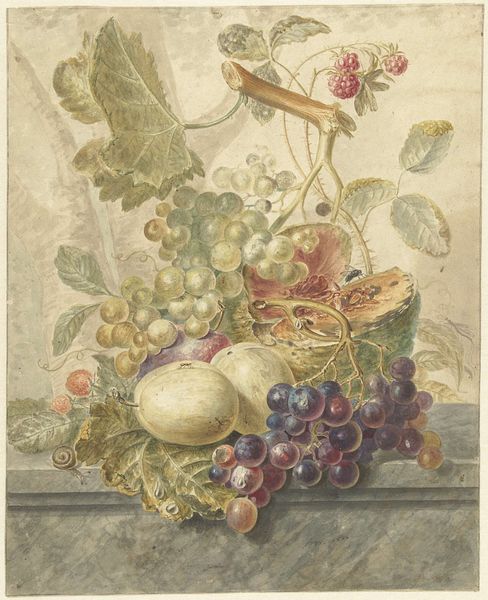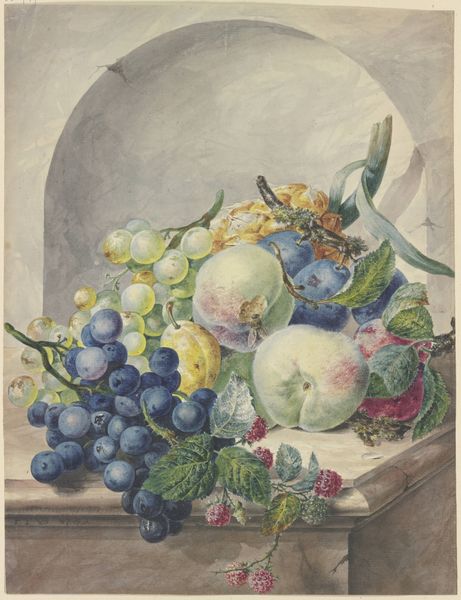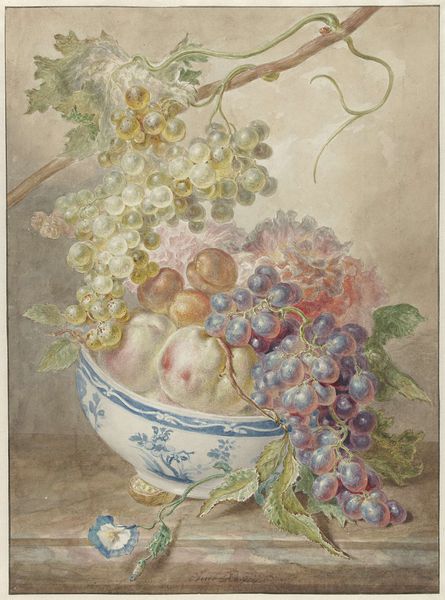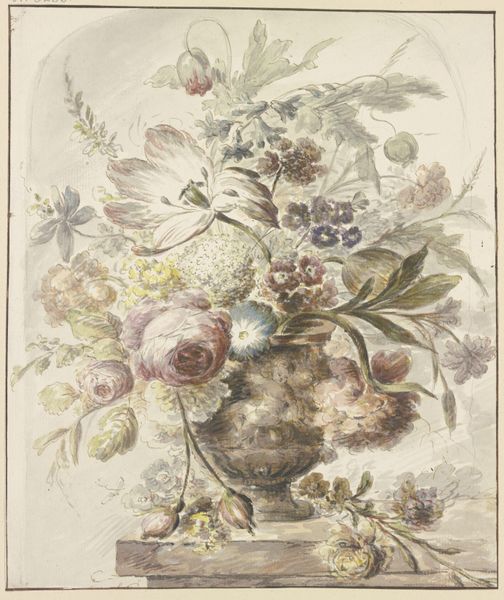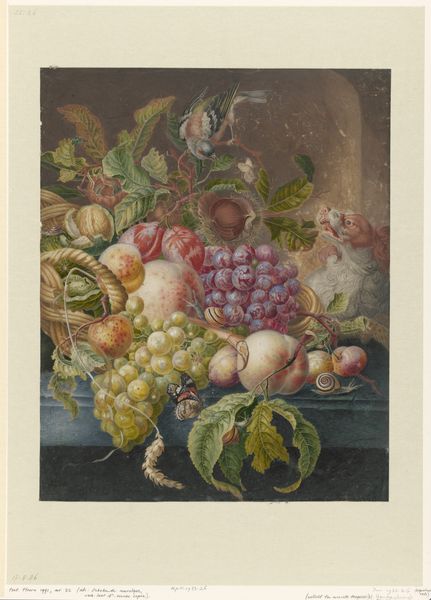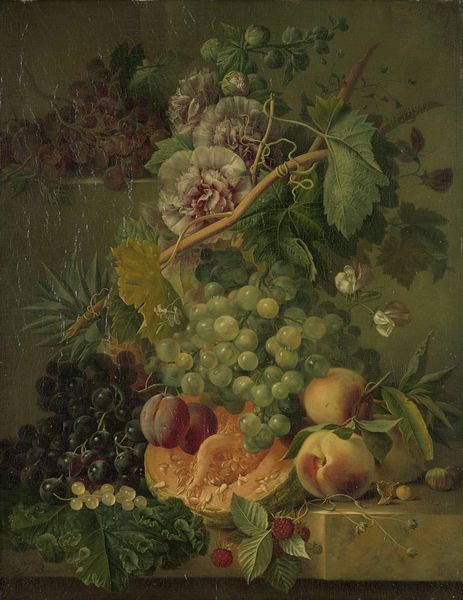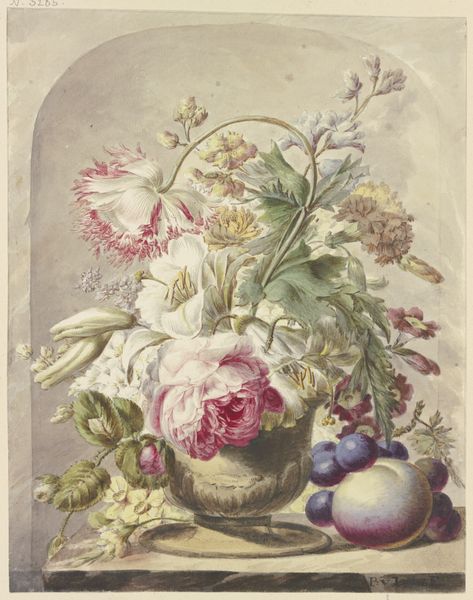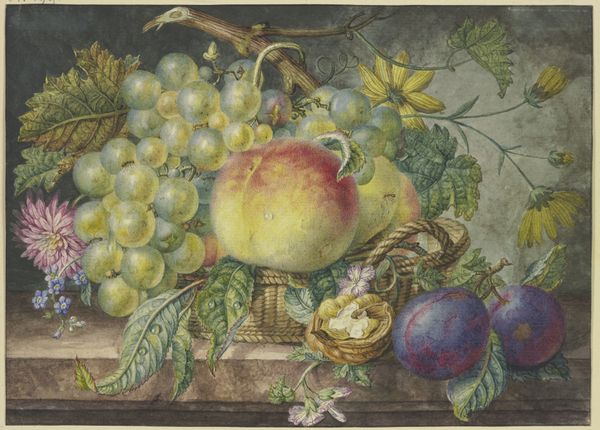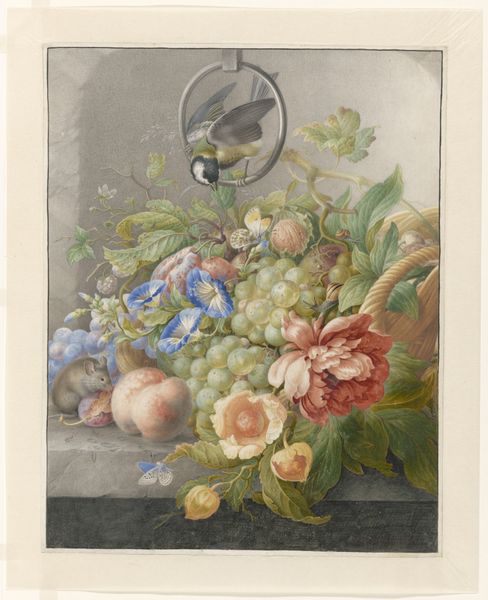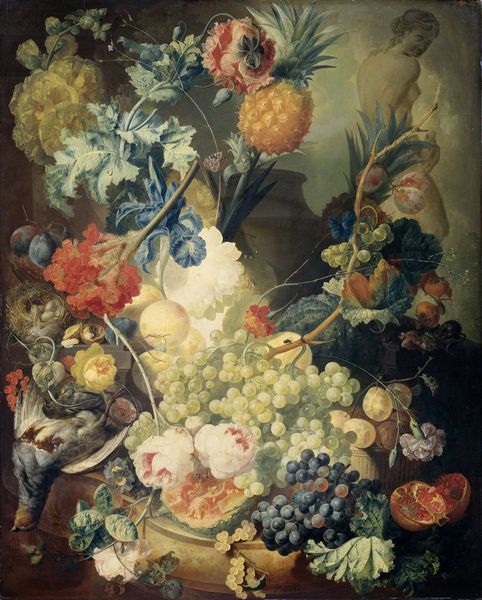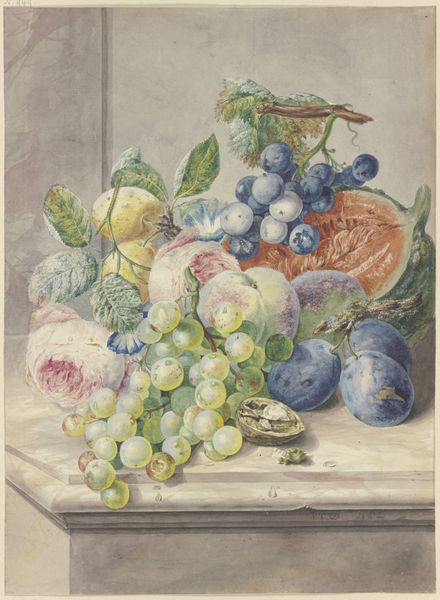
Dimensions: height 451 mm, width 325 mm
Copyright: Rijks Museum: Open Domain
Jan van Os made this watercolor still life of flowers and fruit. It presents us with a complex intersection of nature, culture, and society in the late 18th century. Van Os worked in the Netherlands, a region known for its sophisticated horticulture and its wealthy merchant class, the patrons who bought such images. Through his careful observation of individual flowers and fruits, the artist makes a claim about the importance of the natural world and the status of science. In this image, the artist suggests that nature is something to be studied, classified, and, ultimately, owned. Van Os also suggests that art can play a role in this process. To fully understand this artwork, we might consider what the Royal Academy of Art taught artists about nature, or we might look at the history of botanical illustration as a scientific endeavor. These avenues will give us a richer understanding of the politics of imagery.
Comments
rijksmuseum about 2 years ago
⋮
Jan van Os’ great model was the Amsterdam painter Jan van Huysum, who was active some forty years earlier. Unlike him, Van Os composed his still lifes with a light area in the middle. This watercolour was intended for sale to a collector as a fully fledged work of art. It is much too elaborate to be a preparatory drawing for a painting.
Join the conversation
Join millions of artists and users on Artera today and experience the ultimate creative platform.

